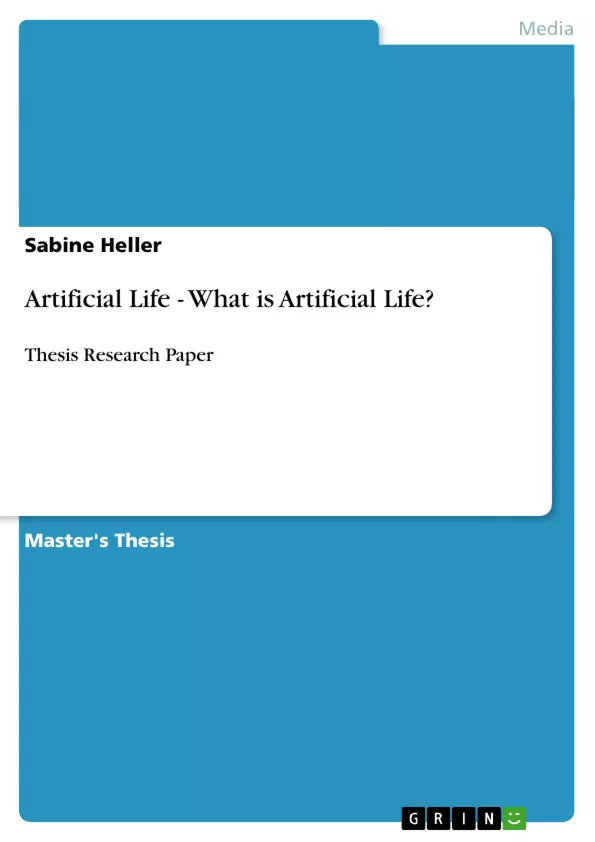What are Artificial Life and Artificial Intelligence and what is the difference between these two topics?
My thesis paper deals with these questions and explores the differences and the thoughts Artificial Life and Artificial Intelligence have in common. It is a short research of the history of Artificial Life and its connected philosophical, moral and ethical questions.
Inhaltsverzeichnis (Table of Contents)
- Abstract
- Introduction
- Historical, Theoretical & Cultural Context
- Artificial Life and Crowd Simulation
- What is Life?
- What is Artificial Life?
- Artificial Life versus Artificial Intelligence
- History and Examples of Artificial Life
- The Ethics of Artificial Life
- Artificial Life and Crowd Simulation
Zielsetzung und Themenschwerpunkte (Objectives and Key Themes)
The main objective of this thesis research paper is to provide a detailed discussion of Artificial Life and Crowd Simulation, illuminating the technical aspects of the author's thesis animation. The research aims to understand the roots of Crowd Simulation in Artificial Life and Artificial Intelligence, defining and exploring the differences and commonalities between these fields. Additionally, the thesis delves into the history of Artificial Life and its connected philosophical, moral, and ethical questions.
- Understanding the theoretical foundations of Crowd Simulation in relation to Artificial Life and Artificial Intelligence.
- Exploring the history and development of Artificial Life as a discipline.
- Analyzing the ethical and philosophical implications of Artificial Life.
- Identifying and examining the possibilities of Artificial Life in artistic contexts.
- Investigating the application of Artificial Life and Crowd Simulation in the author's 3D animation project.
Zusammenfassung der Kapitel (Chapter Summaries)
The abstract provides an overview of the thesis, focusing on the discussion of Artificial Life and Crowd Simulation, highlighting the technical aspects of the author's thesis animation.
The introduction presents the author's interest in Artificial Life and Crowd Simulation, setting the context for the thesis research. The author aims to explore the possibilities of this new technique, integrating artificial behavior into their thesis animation.
The chapter on the Historical, Theoretical & Cultural Context delves into the concepts of Artificial Life and Crowd Simulation, exploring their history, definitions, and differences from Artificial Intelligence. The chapter also discusses the ethical implications of Artificial Life.
Schlüsselwörter (Keywords)
The primary focus of this thesis research is on Artificial Life, Crowd Simulation, and their application in 3D animation. Key themes include the philosophical, moral, and ethical implications of Artificial Life, as well as the historical development and contemporary examples of Artificial Life. The research explores the potential of Artificial Life as a new artistic technique, highlighting the intersection of technology, art, and ethics.
- Arbeit zitieren
- Sabine Heller (Autor:in), 2005, Artificial Life - What is Artificial Life?, München, GRIN Verlag, https://www.grin.com/document/134644



